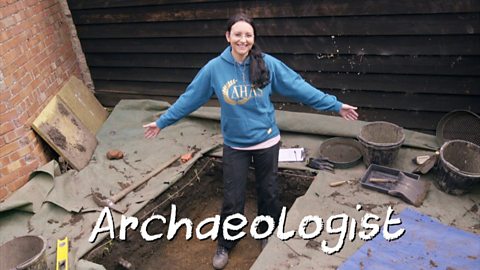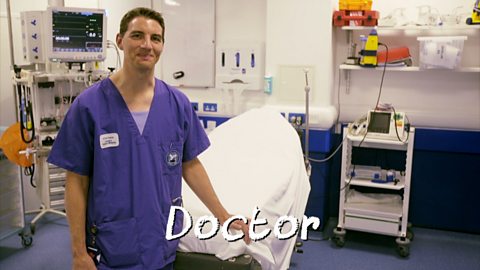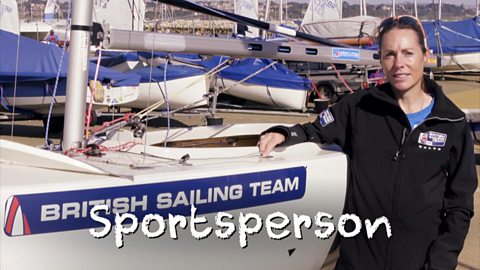Rob:In my job I use sunglasses.A headset.Checklists.Can you guess what my job is?
Rob:My names Rob Billington and I'm proud to be…
Narrator:A pilot is a person who fly's an aircraft. Learning to become a pilot requires a lot of skill. Maths and science are used to work out how objects move through space and time. Geography is also important for planning and navigating.
Narrator:For a least 500 years people have been thinking about the possibility of human flight.
Narrator:Many created designs and experiments to see if it was possible.
Narrator:But the breakthrough didn’t come until 1903. In the United States of America.
Narrator:Bicycle shop owners Orville and Wilbur Wright Made history when they built and flew the first ever controlled, powered aircraft. The historic flight was made on the 17th of December 1903. With Orville Wright at the controls.
Narrator:It only lasted 12 seconds and covered a very short distance. But the age of flight had started!
Rob:As you can see, very busy in the UK.
Narrator:Rob is a pilot. Iesha has come to Brighton City Airport to find out more about his job.
Iesha:What made you decide to become a pilot?
Rob:When I was little my parents used to take me to the airport to watch the planes taking off and landing. And then once when I went on holiday for the first ever time and I got to see inside the cockpit with all the buttons and switches I thought that’s something that looks interesting something I'd want to do.
Iesha:How do you know where you're going?
Rob:Well originally what you used to do is start flying by a map on your lap looking out of the window at landmarks to see where you are. The aircraft I fly now we use a combination of satellites so from the sky but also there's lots of navigation beacons, radio beacons around the country.
Rob:And we use the two together to find out where we are and where we are going.
Narrator:Within a few years people were regularly taking to the sky. With each new flight lasting longer and traveling further.
Narrator:These aircraft attracted a number of daring pilots who were egger to see how far and how quickly they could fly.
Narrator:In 1930 the British pilot Amy Johnson became the first woman to fly alone from Britain to Australia.
Narrator:Today we can fly there easily in a single day. In 1930 it took Amy 20 days and several stops to cover the same distance.
Amy Johnson:I bring messages from the people of England to the people of Australia and I shall be very, very happy if this flight of man can bring together people so far apart but so near together in… Good feelings, fellowship and friendship and everything except mileage!
Narrator:The history of human flight has come a long way in a short time. We've even made it to the moon!
Neil Armstrong:That's one small step for man one giant leap for mankind.
Narrator:Today we can fly to anywhere in the world. where will our next aerial adventures take us and who will be flying us there?
Iesha:If I were a pilot I'd like to fly World War Two planes. And go to the betas. As when I was learning at school it was very fun.
Video summary
Schoolgirl Ayesha meets pilot Rob Billington at Brighton City Airport to learn about what it takes to become a pilot.
The importance of good maths, science and geography skills are included.
Rob explains the technology that helps him to navigate through the skies.
An animated timeline shows us the history of flight, from Da Vinci's flying machine designs in the 1400s onwards.
We focus on the story of the Wright Brothers who made the first flight in 1903, and the incredible progress in flight in the 20th Century, including space flight, is explained.
We also learn about the intrepid expedition of British aviator Amy Johnson and her 20-day flight to Australia in 1930 – a journey we can now do in a single day.
Teacher Notes
Key Stage 1:
Helps address the lives of significant individuals in the past who have contributed to national and international achievements. Some should be used to compare aspects of life in different periods.
Two explorers are listed in the non-statutory examples provided – Christopher Columbus and Neil Armstrong. The early aviators could be compared with these to extend the study – how flight made travel across the oceans so much easier and a shorter journey e.g. it took Amy Johnson 20 days to cover a distance that we can do in a day now.
Air flights led ultimately to the development of space travel. The image of the International Space Station can be linked to British astronaut Tim Peake's stay there in 2016.
They could produce a booklet in the style of a folded aeroplane on which to record the developments in the story of flight.
In Key Stage 1 Geography, pupils should be taught to name and locate the world’s seven continents and five oceans they could apply this knowledge to the study of flight and the locations in the film.
They could use maps and the four compass points to describe the location of different places. English – Rob the pilot uses a checklist in his job.
How and why are these useful? Can we write checklists for remembering what to do in certain circumstances or what to include when writing different genres?
Key Stage 2:
The pilot talks about the way he draws on different subjects such as Geography and Maths.
Children could apply and develop their own geographical knowledge and mathematical understanding by tracking planes on flight tracker sites.
They can check the airport departure and arrival times, record and graph the speed and altitude data, calculate the travel times, arrival times etc., as if they were a pilot.
There is an option to access the 3D view from the cockpit of a selected plane so they can see the geography of the landscape and imagine they are the pilots.
They could use the eight compass points to describe the location of different cities around the UK and the world in line with National curriculum requirements.
This clip will be relevant for teaching History and Modern Studies (careers) at KS1 and KS2 in England, Wales and Northern Ireland and 1st and 2nd Level in Scotland.
Proud to be an archaeologist. video
Schoolgirl Fayth meets archaeologist Pauline Carroll on the site of an archaeological dig in Oxfordshire.

Proud to be an architect. video
Schoolgirl Jenna interviews architect Arthur Timothy at Hay's Galleria in London - a building he designed.

Proud to be a doctor. video
Schoolboy Lakshya visits the Edinburgh Royal Infirmary to interview Dr. Dave Caesar about his job.

Proud to be an inventor. video
Schoolgirl Ella interviews inventor Ben Board about his invention of an inflatable tube to save lives at sea.

Proud to be a potter. video
Schoolboy Ben meets potter Caitlin Jenkins at her studio in south Wales, to find out more about her job.

Proud to be a Sportsperson. video
Schoolboy Oscar meets Paralympic gold medallist Helena Lucas, to find out about her job as a competitive sailor.
